#utopian film
Text
On October 17, 1956 Forbidden Planet debuted in Australia.

Here's some new Robby the Robot art to mark the occasion!
#forbidden planet#nicholas nayfack#robby the robot#science fiction film#science fiction art#science fiction#scifi#sci fi#50s sci fi#50s science fiction#cmyk#robot art#robots#cult classic#national film registry#utopian film#utopian sci fi#movie art#art#drawing#movie history#pop art#modern art#pop surrealism#cult movies#portrait#cult film#new art#new fan art
2 notes
·
View notes
Text
sorry to be doing mcu throwback complaints again and EXTRA sorry for it to be about cacw and aou, sorry, i just am thinking again that if marvel had. in aou. committed to letting steve rogers see that captain america graffiti calling him a fascist with his own two eyes i would have forgiven many of their subsequent deeds and crimes
#like hey. hey shh. cacw but they engage with the politics of it and also have in a previous movie made him look at that graffiti. chefs kiss#WHAT IF THEY LET HIM MAKE A SPEECH. CACW BUT IF THEY LET STEVE TALK. UTOPIAN#i know asking that of mcu is like asking a toddler to build you a house but its just SO INTERESTING. TO ME#THAT IT WAS MADE AND FILMED AND THEN SCRAPPED#that they had steve's reaction be to just remove the helmet identifying him with that symbol and Continuing On#it's just interesting is all i am saying it's Interesting#note: i am obviously not saying steve's a fascist i just think it would be INTERESTING for Little Guy Of WW2 Fame to see it with his eyes#maybe i'm just still mad that my captain america press conference was stolen and turned into a peggy funeral idk. sigh#i'm done i'm done i promise. i don't have fatws open in another tab letting it microwave my brain. dont worry#kayvswords#mcu desperately trying to tell stories without telling an actual story is so genuinely fascinating to me#they want the themes and aesthetics without the substance but like. it's a story. it'll say something whether you want it to or not#idk idk idk. fatws is also i think peak mcu politics it's very funny. fascinating company. theyre so bad at movie#WHY DID CACW HAPPEN LIKE THAT. WHO THOUGHT IT WAS SMART. christ god#i feel like i should tag this as something so i don't get jumped but idk if that's still the vibe here kfdjglkjdfh
73 notes
·
View notes
Text

catherine hardwicke is so valid for this
#the way society would be utopian if she directed all five films#she would have gotten bella that abortion i know it#personal
15 notes
·
View notes
Text
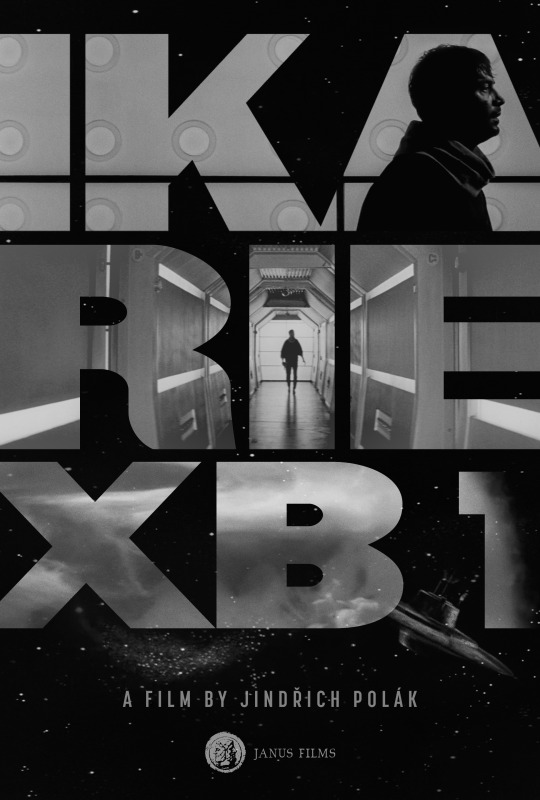
vimeo
#movie#film#cinema#czech cinema#Czech movie#Czech film#science fiction#Vimeo#Eastern Bloc science fiction#Eastern Bloc film#Jindřich Polák#film adaptations#Stanisław Lem#Janus Films#avant garde#utopian futurism#Ikarie XB 1#movie trailer#film trailer#movie poster#film poster
7 notes
·
View notes
Text
Best Malcolm McDowell movies and performances:
1. A Clockwork Orange - Stanley Kubrick (1971)
2. O Lucky Man! - Lindsay Anderson (1973)
3. Time After Time - Nicholas Meyer (1979)

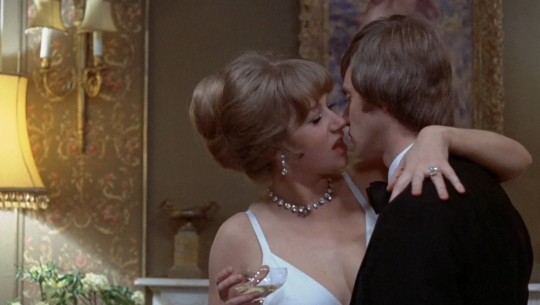
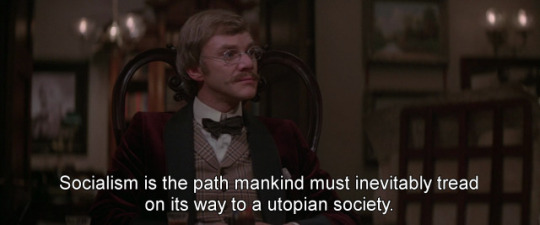
#malcolm mcdowell#a clockwork orange#o lucky man#time after time#stanley kubrick#lindsay anderson#nicholas meyer#1971#1973#1979#1970s#70s#1970s movies#70s movies#Utopian and dystopian fiction#comedy drama#science fiction film#crime film#fantasy film#david warner#anthony burgess#Mick travis#mary steenburgen#psychiatry#public school#Panavision#juvenile delinquency#If#Karl alexander#Alex
4 notes
·
View notes
Text
𝐓𝐇𝐄 𝐍𝐈𝐆𝐇𝐓 𝐖𝐄 𝐌𝐄𝐓.
synopsis: gojo shows up at your flat door to ask you for a favor. warnings: mention of childhood abuse. mention of death.

It was a rainy night in Kyoto. The raindrops fell systematically, and the icy wind blew through the streets, taking the leaves from the trees with it. The blue sea sky was covered with heavy clouds that dumped rain without fear of disturbing the city's inhabitants. Due to the stormy weather ⸻ and the time of day ⸻ there were few people out on the streets, many taking shelter in their homes, as was the case with Kamo Y/n.
Her foot, covered in a fluffy sock with red and white stripes, touched the wooden floor of her apartment as she walked calmly into the living room. Tomorrow would be her day off, something extremely rare for a jujutsu sorceress of her level. And even though the elders of the jujutsu world seemed to have a certain disdain for the word "rest" and for the fact that they didn't care about the physical and mental well-being of the younger generations, putting children and teenagers through completely inhumane and exhausting training, the young Kamo still had a few tricks up her sleeve.
And who says an injury caused by a grade one curse can't be a blessing? Sure, having a partially-healed wound on her shoulder could be hell on earth, but at least it had guaranteed her a day without worries.
Kamo Y/n didn't have many good, quiet moments during her childhood and adolescence. Born outside the clan, Y/n was only truly "accepted" when it was discovered that she possessed the acclaimed technique inherited from the Kamo family, blood manipulation, as well as other abilities, the most surprising of which ⸻ and unseen by the clan members ⸻ was the ability to control not only her own blood, but the blood of her opponents. With such a great and unique ability, one of the greatest clans in jujutsu society couldn't afford to lose sight of it and not appropriate this power. The young Kamo has had a hard and intense training, accompanied by a near-death experience, so such a break would be a utopian reality fully exploited.
But as all good things are, before the young woman could even sit down on her cozy little three-seater sofa, desperate knocks on her door echoed through the apartment.
A sigh left the girl's lips and a question came. Who was knocking on her door at the crack of dawn? Perhaps it was Utahime, or even Shoko, who came up with the idea of watching a film while gossiping about the jujutsu world.
However, when Y/n opened the door, she was surprised to see the round glasses of a certain jujutsu sorcerer with an ego as big as his fame.
"Kamo-san." A complicit smile formed on the white-haired boy's lips in front of the young woman.
"Gojo..." A sigh left the young woman's lips.
What was Gojo Satoru, the strongest jujutsu sorcerer of his generation, doing outside her apartment door?
Ever since she was taken to the Kamo clan, Y/n had been warned about the child who possessed the six-eyes technique. And although there was a certain amount of rivalry between the three most powerful families, she knew that her clan's situation compared to the Zenin clan was a little more favorable with the Gojo clan.
But even so, Y/n had no hypothesis that could explain the alleged appearance of a Gojo in her apartment, let alone any idea that would lead her to the answer as to how he knew where she lived.
Some piece of that puzzle was out of place.
"So..." Gojo said uncertainty, the smile still on his lips.
"Shoko's not here."
"Shoko? What? No! No! I'm not after Shoko!"
"Then... why are you here?"
"Ah... well..." Gojo's gaze sank lower.
Y/n's eyes followed the movement of the sorcerer's bright blue eyes in front of her and noticed a child being held like a shopping bag.
"You..." Kamo looked at the child, who had a neutral expression on his face, and then at Gojo "You kidnapped a child?"
"WHAT?" Gojo laughed mockingly, "I'm just doing a favor..."
"And why are you here?"
"To ask you for a favor..." Gojo's smile faded from his lips.
"You came all the way to Kyoto to ask me for a favor?"
"Well, I have a mission near Kyoto and since you live here, I wanted to ask you for a favor..." Gojo's free hand went to the back of his head, "Ah, you could look after this brat while I do the mission, I promise it won't take too long."
"If you knew you had a mission, why did you agree to look after him?"
"Well, it's more complicated than you can imagine... But it's just this once and I promise I'll be back as soon as I can, just stay with him for a few hours."
Y/n looked again at the child held by Gojo. The boy met her gaze, but his expression remained neutral, he looked a little tired. But the intensity of his green eyes sent a shiver down her spine.
"Ah well... ok, but only for a few hours." Y/n looked at Gojo again.
"Thanks, Kamo!" Gojo smiled openly, "I'll reward you later! And you, brat, I think you'd better behave."
Gojo placed the child on the ground next to Kamo and waved his hand before leaving. Y/n watched his white hair disappear until she turned her attention to the child, who was already looking at her.
"Well... ah... make yourself at home." She opened the door to her flat, showing him the living room and the entrance to the kitchen.. The boy glanced in the direction of the jujutsu sorceress before entering the apartment and taking off his sneakers. "What's your name?"
"Fushiguro Megumi."
"My name is Kamo Y/n, it's nice to meet you."
Megumi looked at the girl in front of him and nodded slightly. Apparently he wasn't a child who talked much, only when asked directly.
"Do you want to watch something? Maybe Digimon?" Y/n made her way to the sofa and sat down, waiting for Megumi to follow in her footsteps. "Or anything you want, you don't have to be afraid to ask."
"Could I have a glass of water, please?" Megumi's voice came out a little lower.
"Sure, why don't you sit on the sofa while I get the water. Here's the remote, you can watch whatever you want, don't be shy." Y/n smiled slightly and got up from the sofa, handing Megumi the remote, who accepted it timidly. The young Kamo went into the kitchen and immediately looked for a plastic cup for Megumi. The girl placed the plastic cup in the water filter and listened to the faint sound of the television, perhaps Megumi was beginning to feel comfortable. After filling the cup, Y/n returned to the living room and handed it to Megumi, who thanked her in a whisper.
Kamo sat at the other end of the sofa, watching a documentary on wolves on the television.
"Do you like animals, Fushiguro?" She looked at the child who just nodded, his eyes glued to the television, but Y/n couldn't help but notice the slight blush on Megumi's ears. He was cute, even though he seemed to want to look serious.
But the real question there was what Gojo Satoru had gotten himself into by taking care of this child...

"I think I deserve an explanation." Y/n crossed her arms as she looked at her reflection in Gojo's round lens sunglasses.
It was almost two in the morning, and Megumi ended up sleeping on the sofa during the documentary about white elephants.
"Well, it's a long story..." Gojo laughed slightly, his hand on the back of his head.
"Then I guess we'll have a long night." Y/n gave Gojo room to enter the flat. The first thing his blue eyes saw was the figure of little Fushiguro wrapped in a blanket on the sofa.
"Is there somewhere more private we can talk?" Gojo's voice sounded serious in contrast to the smile that played on his lips.
"Let's go to my room."
"Aren't you going to buy me a drink first?" Gojo smiled mischievously, letting his glasses slip down the bridge of his nose to reveal his incredibly bright blue eyes.
"Stop being an idiot, Gojo," Y/n rolled her eyes as she led him to her room. When they reached the room, the girl closed the door behind her and sat on the bed with her legs and arms crossed. "You can start talking now."
"Ah... well..." Gojo laughed nervously, "Have you ever heard of Toji Zenin?"
"Toji Zenin? The non-cursed user who was an ex-member of the Zenin family? Who was known as the Sorcerer Killer?"
"Yes. Huum well... a while ago I met him and we had a "disagreement" that led to his death..."
"But what does Toji Zenin have to do with Fushiguro?"
"Toji Zenin is Megumi's father..." Gojo pressed his lips together in a line, waiting for a reaction from Y/n.
"You killed Megumi's father..." The girl's words sounded more like a statement than a question.
"Megumi was going to be sold to the Zenin family."
"And now you're looking after Fushiguro so that he doesn't fall into the hands of the Zenin clan?"
"That's pretty much it," Gojo shrugged.
"Do you think you can take care of a child half your age?" Y/n looked at him incredulously. "Gojo, the Jujutsu world is unpredictable and cruel, there are many variables and bad things that can–"
"That's why I'm trying."
"You're a hopeless case," Kamo whispered and let out a sigh, "you're going to need help, and lots of it."
"So you'll help me?" Gojo's eyes sparkled with hope.
"Gojo, Fushiguro is a child, he needs someone to look after him and protect him, preferably an adult who knows how."
"I want Megumi to have a normal childhood, I don't want him to have to go through what we went through, that's not fair." Gojo sighed.
Y/n looked at Gojo. He was right. Megumi deserved a decent childhood, something different from the hostile treatment she had received as a child. He didn't deserve to go through what she had gone through as a child, no one did. And helping Gojo from time to time with Megumi could, perhaps, improve the boy's situation.
"If you need help, you can call me." Kamo's words surprised Gojo.
"Really?!" the light in Satoru's eyes returned at the same moment.
"Yes, but you must promise me that Fushiguro will not go to the Zenin clan, no matter what abilities he develops."
"I promise!" A broad smile appeared on Gojo's lips.
"Well, this is going to be a long journey..." a sigh left Y/n's lips, hardly knowing what the future held.

memory garden masterlist !
☆! tag list : @arminswifee . @khaleesihavilliard . @chieeeeeee . @manooffline . @shybananabagellover . @r0ckst4rjk . @sad-darksoul . @chuluoyi . @stormflysaysstuff


© SEONGHRTZ, 2023ㅤ⸻ㅤall rights reserved. please do not copy / steal / translate / modify any of my works !
#五条悟ㅤ͏✷ㅤ𝑚. ͏𝑔𝑎𝑟𝑑𝑒𝑛 𝄒#☆ . . seonghrtz !!#jjk#jujutsu kaisen#jjk fanfic#jujutsu kaisen fanfic#jjk fluff#jjk gojo#jujutsu gojo#gojo#gojo satoru#gojo x reader#jjk gojo satoru#gojo satoru x reader#gojo fluff#gojo fanfic#jjk x reader#jujutsu kaisen fluff
394 notes
·
View notes
Text
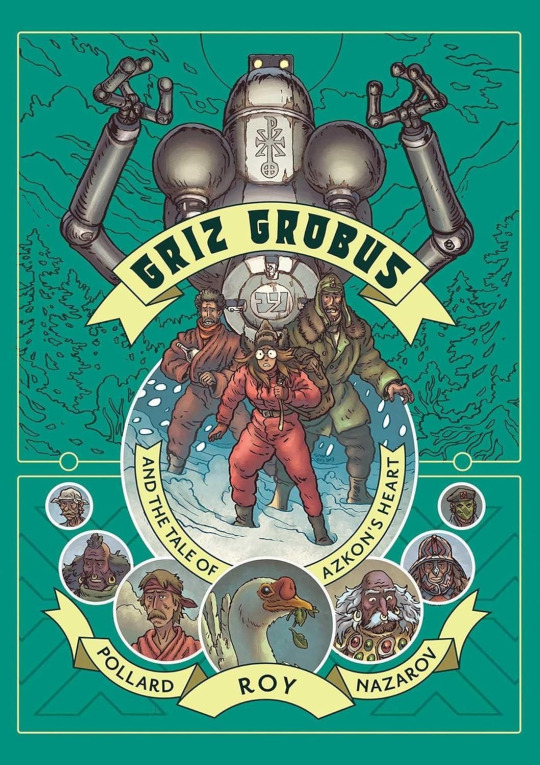
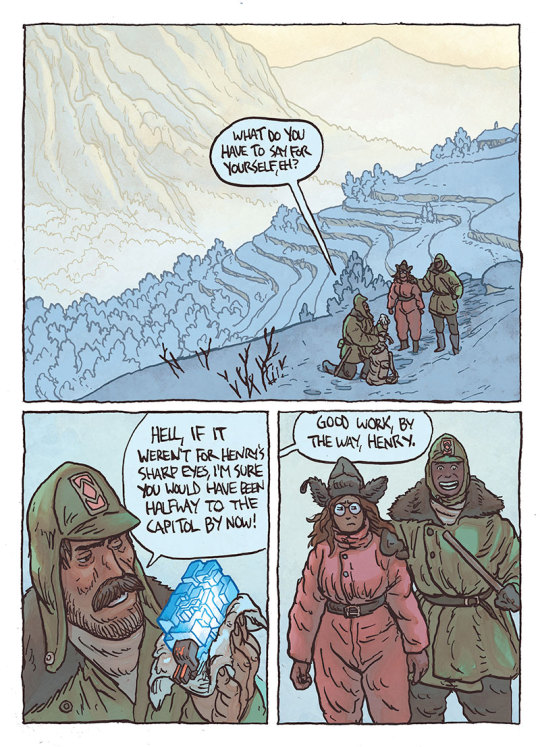
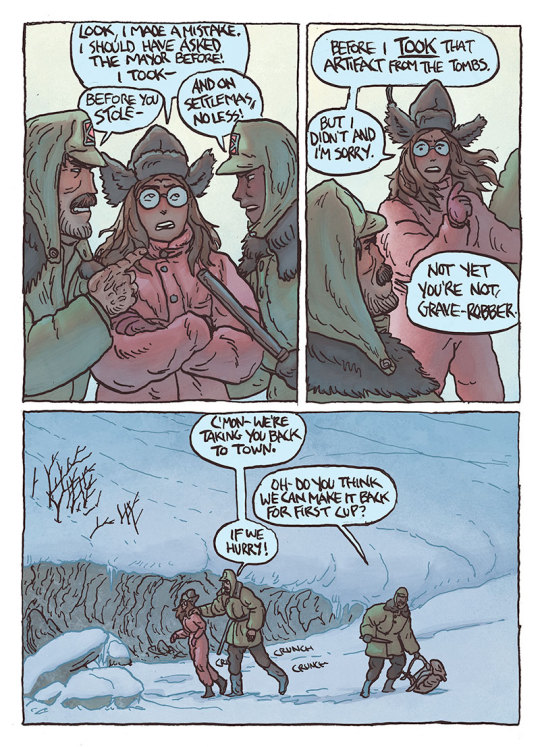
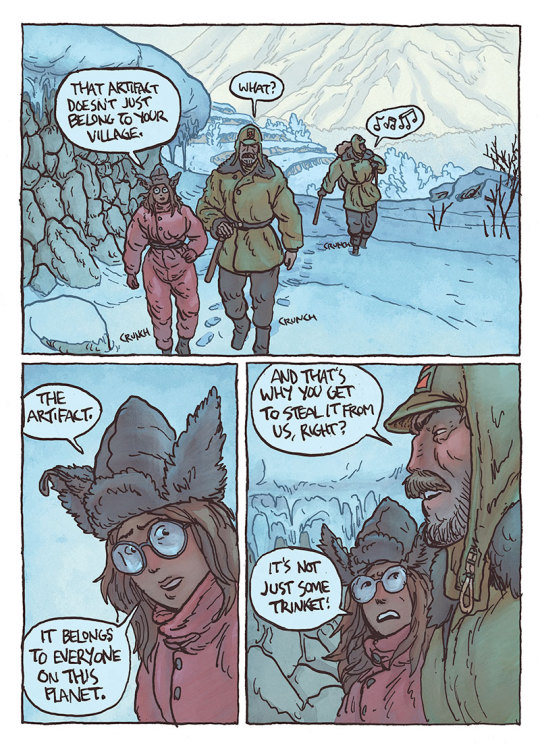

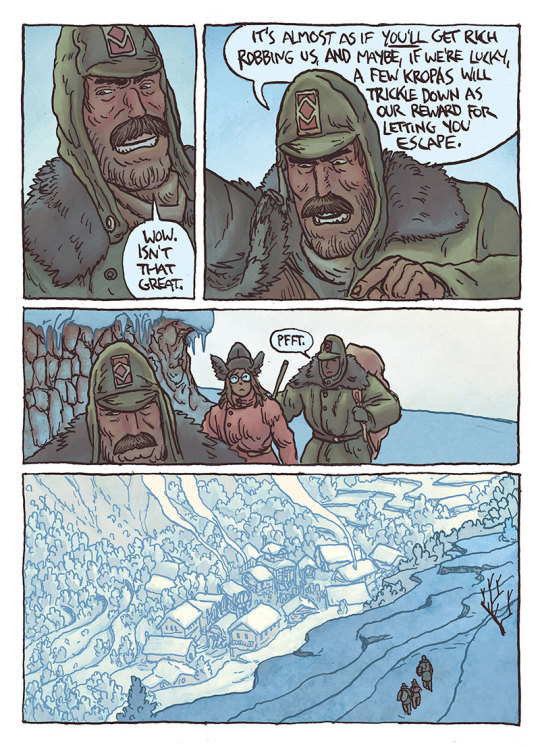
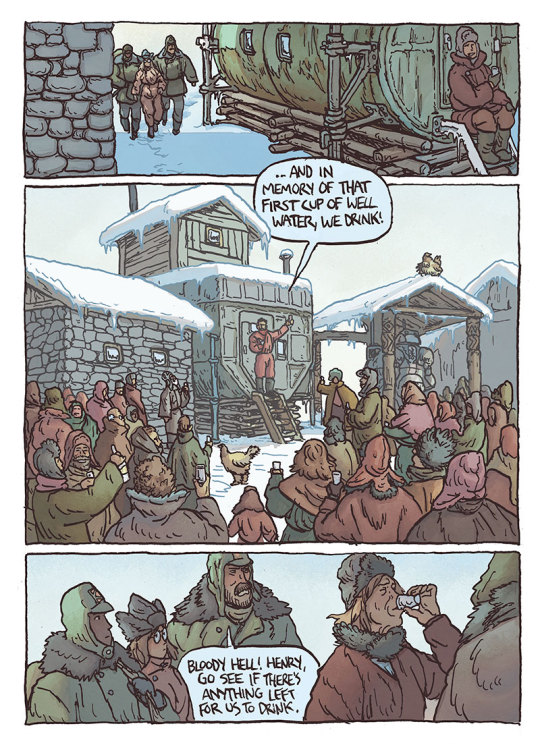
A little press release from Image comics - we're putting out a mass market edition of Griz Grobus! Press release follows:
PORTLAND, Ore. 12/07/2023 — The high fantasy, graphic novel Kickstarter sensation, Griz Grobus, by co-writer/artist Simon Roy (Prophet, Jan's Atomic Heart and Other Stories) and co-writer Jess Pollard, with colors by Sergey Nazarov, will be available in trade paperback format for the first time this June 2024 from Image Comics.
Griz Grobus was originally a popular Webtoon sequential webcomic that leveled up its exposure with the 2021 launch of a Kickstarter campaign for a stunning hardcover edition. The campaign ignited fandom fervor, was fully funded in under a day, and raised nearly $70K—far exceeding the stretch goal. This Summer’s forthcoming paperback edition will bring this roaring success story to an even wider audience of readers.
"Part of what we wanted to make, in Griz Grobus, was a story that felt like a foreign film from a country you haven't heard of," said Roy. "Natural, familiar elements, sitting harmoniously alongside the new and unfamiliar. The proposition of getting to introduce a whole new audience to our little pocket universe, and the worlds within it, is very exciting!"
Set in the same sci-fi universe as Roy's Habitat,Griz Grobus is another tale of life after the collapse of the interstellar empire. But unlike Habitat—where a once utopian orbital community found itself descending into cannibal tyranny—the characters of Griz Grobus inhabit the rural world of Altamira, where post-utopian frontier life has blossomed into something a bit more wholesome.
Pollard added: "I can definitely say it is one of the funniest, most delightful things I've ever been a part of, and I laugh every time I read the story, as if I'm reading it for the first time. I hope readers will feel the same warmth when they read this edition, whether it be for the first time, the second, or third.”
Griz Grobus tells two parallel, intertwined tales from the far-off colony world. High in a sleepy mountain village, the overzealous academic ambitions of a young scribe lead to the resurrection of the town’s ancient colonial-era priest-bot. This long-defunct pastor finds himself in a world that has passed him by, but refuses to simply accept his obsolescence, much to the chagrin of the scribe and the local townsfolk. The second story, a mise-en-abyme, is Altamira’s most famous novel (being avidly read by the characters of the first story). It is a fantasy tale about a war-god who gets trapped in the body of a goose, and the efforts of one pacifist cook to delay the war-god’s bloody return to the battlefield.
This lush, intricately detailed, standalone fable is perfect for fans of Hiyao Miyazaki, Asterix, and Arthur C. Clarke.
The Griz Grobus trade paperback (ISBN: 9781534397866) will be available at local comic book shops on Wednesday, June 5 and independent bookstores, Amazon, Barnes & Noble, Books-a-Million, and Indigo on Tuesday, June 4.
Griz Grobus will also be available across many digital platforms, including Amazon Kindle, Apple Books, and Google Play.
277 notes
·
View notes
Text
The Disability Representation Test I came up with (eventually)
It's been a hot minute since I posted about this; I was reminded of it by this post, talking about disabled people (or lack thereof) in 'utopian' sci-fi.
This was inspired by the Bechdel-Wallace Test for women's representation. And while I recognize that that has been taken out of context, and overused as a means of film and literary critique, I found the process of coming up my own version useful for figuring out what I find satisfying in a story (I've named it The 1,001 Problems Test):
One: There's at least one disabled person
(Requiring more than one, as in the Bechdel-Wallace Test, would be too easy to "pass" by putting them in an institutional setting, rather than in mainstream society, especially in a short story, with only a few characters to begin with)
Two: Who wants something
(Too often, the disabled character is only there as a way for the protagonist to show their qualities and morals, but is never given a chance to express desires of their own)
Three: Besides Cure, Revenge, or Death
(A disabled character can certainly want to be cured--especially for chronic pain, fatigue, and progressive conditions--but they should want something else, too. They should have some motivating factor beyond their disability).
Four: And takes action to try and get it.
(See point Two; if you retold your story from your disabled character's P.O.V., could they be the protagonist, or are they just looking at the world through the window, waiting for someone else to rescue them?)
#disability representation#disability in sci-fi#Bechdel-Wallace Test#1001 problems test#my own fiction litmus test#bold text
177 notes
·
View notes
Text
My Top 15 Vaporwave Horror Movies
I thought I would put together a list of vaporwave/dreamcore/liminal aesthetic horror movies that I find to feel outside of time and space. That's sort of my vibe here on tumblr, and I also like the mantra of "if there's something you want to see that no one has made yet, make it yourself." These are films that I personally love, and the list not meant to be definitive. Remember also that art is subjective. I hope someone out there finds at least one film they want to add to their watchlist! It's been a minute since I've seen some of them, so let me know if I need to correct something.
15. Mandy (2018)
I wish I could add pictures for all of these entries, but I can still only add 10 pictures to a post blah. It's such a shame because I wanted to show off that gorgeous aesthetics of all these films. Oh well. This is a revenge flick about a cult kidnapping Nick Cage's girlfriend and him losing his marbles about it. Definitely recommend if you're the mood for vibes and/or Nick Cage NickCageing.
TW: violence, blood, fire
14. Come True (2020)
This is a haunting, fantastic vibes movie. It feels so otherworldly. It's about a homeless young person participating in a sleep study to be able to safely get some sleep. It would be an almost perfect film if it weren't for the just garbage ending. If you've seen it, you know what I'm talking about. If you haven't, just skip the last 5 minutes, and take it for what the rest of the film is: beautiful.
13. Braid (2018)
This film follows a couple of young drug dealers on the run from their supplier crashing at a mentally unwell friend's house. The catch is they have to play along with their host's unhinged "game" while they hide out. Not gonna lie, this film is trippy af and definitely not for everyone. I can guarantee that no matter what, it is a ride.
TW: heavy drug use, blood
12. Perfect Blue (1997)
A pop star retires to become a full-time actor, which angers some of her fans. Her sense of reality becomes warped when one obsessive fan begins to stalk her. I don't love some of the turns this movie takes when it comes to mental health, but it's hard to deny this film is classic that has stunning animation.
TW: negative depictions of mental disorders, violence, blood
11. Skinamarink (2022)
This controversial found footage movie is sort of hard to describe because it's so otherworldly. Basically, two kids wake up one night to find their dad and all of their doors and windows are missing. Everything about this nostalgic yet terrifying film is vibes and aesthetic: liminal, vaporwave, voidcore, dreamcore, you name it. It feels like a fever dream, and it's a nightmarish journey you won't soon forget, for better or worse.
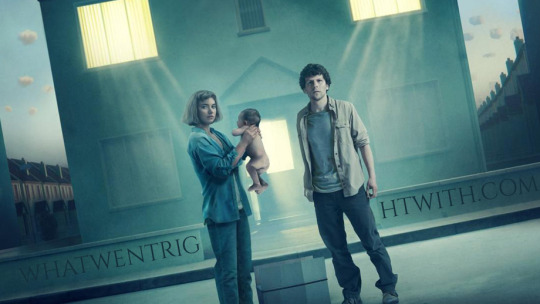
10. Vivarium (2019)
A couple are looking for a home to share. They follow a strange realtor to an even stranger labyrinthine neighborhood that seems to have no escape. If you're into liminal spaces, this film will definitely scratch that itch for you.
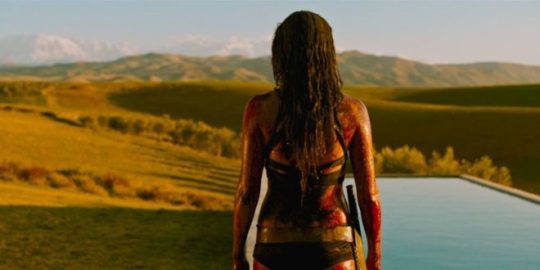
9. Revenge (2017)
This is a r*pe revenge tale that has absolutely beautiful scenery and cinematography. I love the sweeping liminal landscapes and vibrant vaporwave colors. It's a standard plot as far as the genre goes, but it's directed by a woman, so it has a different angle that I find to be superior to most films of the genre.
TW: violence, gore, SA, blood
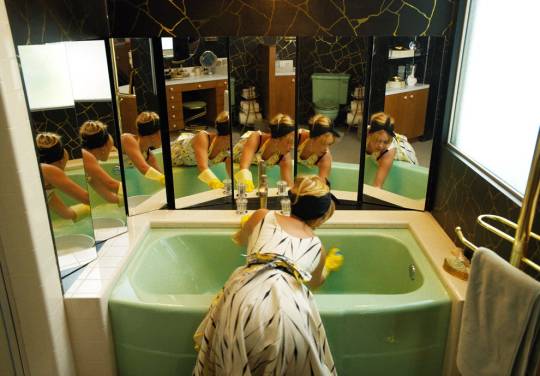
8. Don't Worry Darling (2022)
A 1950s housewife begins to suspect that something about her utopian community is not what it seems. This film seems to be a bit controversial, too, for some reason. Whatever the case may be, I adore the liminality and dreamy feel of this film. You really get a sense that this world is outside of time and space.
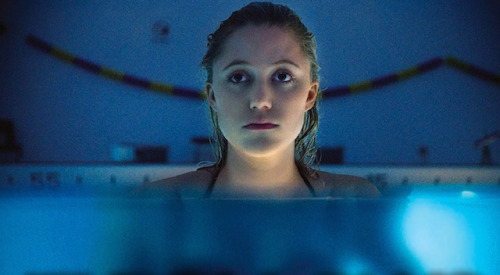
7. It Follows (2014)
This film is straight up about a sexually transmitted curse. Jay sleeps with her boyfriend for the first time, and then finds out she must outpace this demon that can take the shape of anyone forever lest it kill her, or she must pass the curse on to someone else. The shots in this film are to die for. Especially for connoisseurs of the liminal, vaporwave, and dreamcore. Highly recommend for the visuals and music alone.
TW: gore, blood
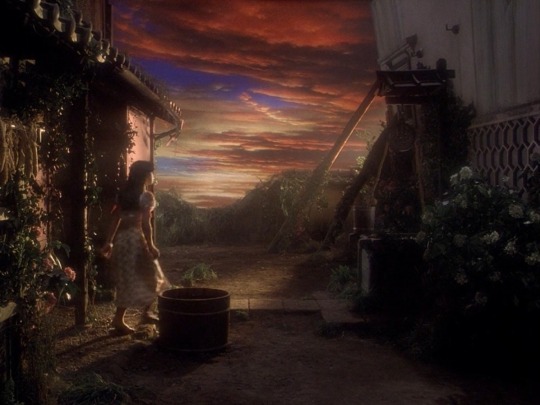
6. House (1977)
Gorgeous decides to stay with her aunt to hopefully get closer with a group of six of her friends. The girls come to find her aunt's house is more than meets the eye. The visuals and absurdity are what make this movie. It's a classic for a reason.
TW: cartoon gore

5. Akira (1988)
Tetsuo gains psychic abilities via a secret military project and becomes mad with power. It's up to his friends and a small group of psychics to stop him. This is another classic anime. Its 1980s futuristic mentality really lends itself to the vaporwave atmosphere of the cityscape. I highly recommend this classic if you haven't seen it.
TW: violence, body horror

4. Censor (2021)
Enid is a serious film censor with a shrouded past that includes her long-missing sister. She watches a film that bears eerie resemblance to her vague childhood memories that begin to take hold of her as tries to piece them together. I don't think I'm totally clear on when this film takes place, which is what I love about it. It has a spooky surreal quality that will both draw you in and unsettle you.
TW: violence, blood

3. She Dies Tomorrow (2020)
Amy is convinced she is going to die tomorrow. Her friend Jane comes by to comfort her, and then becomes consumed by the thought she will die tomorrow as well. This film is as strange as it is beautiful. It will either leave you in tears or confused af or both.
TW: blood
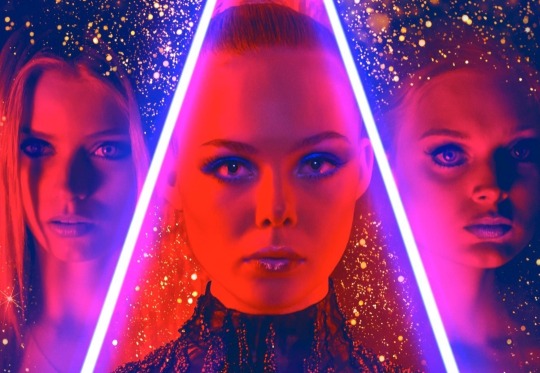
2. The Neon Demon (2016)
Jesse is a very young, gifted model who is new in town (probably LA). She quickly signs with an agent and begins getting gigs, breeding the contempt of the established models around her. This is probably one of the most visually appealing films I've ever seen. The music is on point. The low key acting is a vibe. I just adore this film. 10/10, highly recommend.
TW: gore, blood
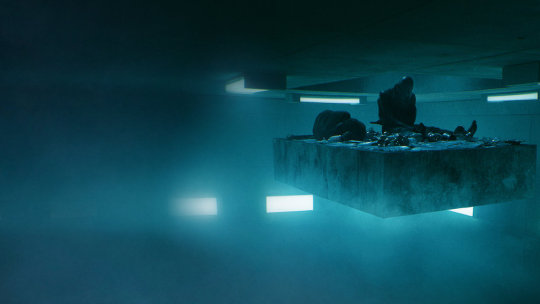
1. The Platform (2019)
A man wakes up in a prison that is an indescribable liminal pit where there are a seemingly never-ending number of levels. A platform full of food is lowered through each level once a day, and everyone on the lower levels must fight to survive. This film is just so utterly anticapitalist and gorgeous that I can't help but sing its praises. I think everyone should watch this movie at least once. It is horrifying yet eye-opening. Certainly one of my favorite films of all time.
TW: gore, violence, blood
Thank you for reading my list! Like I said, I wanted to make a list like this because I couldn't find one when I went looking. I hope you found something to add to your watchlist! I tried to include some of the big TWs for these movies, but they're far from complete lists. So please check websites like doesthedogdie.com for more complete TW lists if you have any concerns. Make decisions that are right for you. Thanks again, and have a happy and safe new year! xx
#the platform#el hoyo#my writing#listicle#top 15#horror movies#horror films#vaporwave#liminal#the backrooms#dreamcore#voidcore#the neon demon#she dies tomorrow#censor 2021#akira 1988#house 1977#hausu#it follows#don't worry darling#revenge 2017#vivarium 2019#skinamarink#perfect blue#braid 2018#come true 2020#mandy 2018#nicolas cage#surrealism#blood
83 notes
·
View notes
Text
On March 28, 1956, Forbidden Planet debuted in Los Angeles.




#forbidden planet#nicholas nayfack#robby the robot#science fiction#retrofuturism#cmyk#sci fi#science fiction movies#science fiction art#space adventure film#space opera#utopian science fiction#monster movies#movie art#art#drawing#movie history#pop art#modern art#pop surrealism#cult movies#portrait#cult film
1 note
·
View note
Text
Idk in my idyllic world the use of ai could improve animation workflow and catapult junior level artists into creative leads roles faster if there's less menial work to be done.
We could have artists still in charge of creative decisions and drawing vis dev while the computer assists with the most labour intensive steps of making shows or movies.
For simpler shows for instance it would be neat I think if you could run your storyboard through a script and have the machine import all relevant assets staged to the best of its abilities instead of manually having to drag props and rigs into your shot and scaling everything before you can even begin to animate (does that tech exist already? Probably).
Like nowadays we already have animation programs where you can set deformer limitations.
youtube
i could imagine a possible future where software includes or does subscription services to ai trained on work by artists who got paid to draw or animate template motions or anatomy references. something like generating smart bones could become an automated feature. i can maybe even foresee tech that can look at a character model or design sheet you've drawn and generate a rig for it. in all these scenarios you would have to correct stuff and tune things to your liking, but it gives a considerable head start to the work.
More dynamic shots could be made on smaller budgets if we gave ai props or backgrounds and said "give me this but rotated a little" instead of drawing the same damn chair from 10 angles as a prop artist, I refuse to believe anyone's passion in life is to make prop turnarounds or clean up inbetweens.
what if you had an ai that was trained on drawings of heads at every angle, animals in every angle, a slew of expressions and mouth shapes, then gave it a character ref drawn from a few angles and bam it makes the vtuber rig for you.
this still leaves space for original art and would still require a skilled creative to make something look it's best, that could be a gig. more animators could potentially begin their own smaller studios if cartoons are way easier to make. if anyone could potentially make their own movie in the future, charge people to do it right! no computer can replace a human knowledgeable in film or drawing to guide it in the right direction. without creative people at a production's core, i think the future of ai film is just a very, very, sophisticated version of goanimate than can also do art theft.
this could become the weird futuristic version of "i wrote this children's book can you illustrate it for me?" but instead your mom's friend wants to commission a show pilot they wrote a screenplay for.
When animation was drawn on cels we had entire painting departments whose job it was to paint each individual frame by literal numbers, and it was tedious!! Now we have the paint bucket tool for digital coloring, and software like Toonboom lets you color in one frame then generate the coloring for the proceeding frames. We still have a colour and painting department, it's just different work now. but now we also have people making full color cartoons from their basements because Flash was released for personal computers with said digital tech along with computer generated motion tweening for animation!!
Junior animator and junior bg painter or prop artist roles will probably face an overhaul where more work can be done with less people. But the utopian outcome would be these junior artists can sooner take up lead or supervisor positions where they get to execute their own ideas instead of someone else's. more shows or movies could be produced with less crew for less money, slashing costs when deciding what to greenlight or to take a risk on new talent. The problem is capitalism would make it suck because it only cares about exploiting workers for those cheapest costs possible and forego the necessary human crew required to make the difference between machine-assisted productions and pure ai generated slop
#my thoughts on ai#as someone with a degree in animation whose worked a bit in several parts of production pipeline
171 notes
·
View notes
Text

New pic of Adam Driver in Megalopolis & film info
36 notes
·
View notes
Text
“this is easier than posing the true problem”
Florence Gauthier: On the subject of Wajda’s “Danton”
Annales historiques de la Révolution française, No 251 (Janvier-Mars 1983), pp. 182-185
Certainly, all political discourse began with 1789, indeed, so much for François Furet’s wishful thinking that the Revolution is finished! (1) If there was a time in which 1789 founded the Republic, then there also came a time in which 1789 became the embryo of the proletarian Revolution. From teleology to teleology, today we have arrived at this: the French Revolution, according to Wajda, was an early draft of Stalinism.
It is essentially by psychologic methods that Wajda shapes his film to lead us deeper into these totalitarian hearts. And what comes first is fear.
The film bathes in oppression, the greenish, greyish, brownish colours, the harsh blue lighting, make the actors look diseased. Fouquier-Tinville is pale as linen, Saint-Just is bistre, Robespierre goes from yellow to grey and ends up in the most mortuary green imaginable on his bed of expiation. Not one “normal” head apart from that of Danton, the eyes are reddened, the teeth are unclean, the wigs are askew. Conversations between people are sharpened with a knife, not one smile, “people pout and sulk”, people yell instead of talk, people bark, several bursts of nervous laughter. Only Danton has a real human laugh and displays some trace of tenderness.
Not one feminine presence. Éléonore Duplay, the “fiancée” of Robespierre, rigid as the Puritanism that she presumably represents, slaps her little brother who cannot learn his table of the Rights of Man and of Citizen and weeps without a sound. Lucile Desmoulins is hard as a rock.
The angles of view are clogged up. All is cut off by corners of walls, by corners of streets, by narrow doors, by corridors, by railings. Every view is framed, driven along like hunted game. A noise from the deep perpetually grinds at the characters and the audience; far-away whispers from far-away people?
Not one “normal” voice, all are raspy, what an ordeal! The horrible bitter voice of Robespierre, the whimpering of Desmoulins, the barking of Saint-Just, the dog teeth of Billaud-Varennes. The figures…! They come out of the most sordid hovel imaginable. Is that Collot with his blackened eyes, his vermillion mouth open like a shop-window? That head of an old haggard, is that Couthon? Apart from Danton, all the others hail from the hideous underbelly of I don’t know which Hospital. The mediocrity, the gross vulgarity, the burden of chains weighing on all … this is hell. Is this the revolution? How horrible! Try as Danton might to stop this dance, he is caught up in the inexorable mechanics. Try as Robespierre might to reign in the process, he is carried away in the well-oiled mechanism that overpowers his illusions as a utopian, as a lover of Truth, of Justice, of Equality. He is the Conscience and he must pay for his folly. Hell is revolution.
⁂
Wajda wanted to give a psychological dimension to the Danton case. All this is in play from the very first scene, in which Robespierre, already green with envy, watches through his window Danton basking in the crowd. Danton is supposed to love Robespierre and finds joy in having humiliated him. Then comes a little tenderness: he lets himself be touched on the neck by forcing Robespierre’s hand up there, and he groans with pleasure. Robespierre refuses this love, he is presumably envious of Danton’s vitality, the vitality that he is incapable of. Hence Danton will die.
The relationship of Saint-Just – Robespierre is cut from the same cloth. Saint-Just is in love with Robespierre and incessantly circles him like a fly. He comes to celebrate victory after Danton’s death. Scene at bedside, Robespierre unwell. Saint-Just holds out his arms and his brilliant idea: he offers personal dictatorship to his idol. Robespierre refuses, he certainly does not want to be loved!
It must be clarified that no document at all backs up these interpretations and I ask myself, is this what “psychology” is, is this the humane and profound dimension? Is today’s trend to reduce the human being to these little connections?
Here we see Robespierre once more emasculated under a persistent legend, for the Sex of the Jacobins “works” well for many, and a vast literature please themselves by contrasting a corruptible, bon-vivant Danton, in short, a humane man, with a puritan Robespierre and thus, for one thing follows another in deduction, a frigid and despotic Robespierre. What is the point of hiding behind these oppositions reduced to differences in character when it was also about political conduct and about different interpretations of power? Robespierre did not abuse his position or his power to exercise sexual power, and thus we see him here accused of impotence (and of repressed homosexuality and of being unable to love and thus of despotism, etc, etc…) It is true that this is easier than posing the true problem, the problem of one aspect of power so concealed in Robespierre’s case and presented in Danton’s case as a trait of a human and “natural” character. In both these cases, the problem of power has disappeared. Is it understood that Robespierre was a young and beautiful man, elegant, refined, and that he had much success? I must naively recall this fact, since this opposition of characters that Wajda imposes is supposed to allow him to “explain” his characters and the revolution.
There is not one “woman” in this film. In the 18th century, were all relationships relationships between men? Wajda pairs up Danton-Robespierre, the two complementary aspects, the Flesh and the Conscience. Yet the Wajda’s talking point here is too Catholic for the era, it belongs to the 17th century and elsewhere. The Enlightenment’s humanism, the pantheist revolution, the thought of Nature – all this is simply absent. Why do we have to think of Robespierre disguised as the tortured Jesus and as an archbishop? (2)
Is this not a double-reading of the Danton-Robespierre pairing that is proposed to us? Danton the material for the west, Robespierre the passion, the folly for Poland. But no, this Catholic and masculine conception does not belong to the 18th century. No, Danton could not be reduced to animality, and Robespierre, anti-clerical, pantheist, the philosopher of Nature, is not the Catholic and romantic hero presented here.
⁂
This error of perspective is compounded with innumerable factual errors. Here are but a few of them: the ransack of the printing house of “Le Vieux Cordelier”, pure invention. Robespierre wanting to remove Fabre from David’s tableau, The Tennis Court Oath, pure invention (Wajda reaches a peak here: he accuses Robespierre of falsifying history, and it is he, Wajda, who is inventing this episode!), this archbishop costume on Robespierre preparing for the Festival of the Supreme Being, pure invention. Yet these inventions are not mere details, since they were intended to portray a character. It is by these little touches that Wajda establishes a parallel between the Terror and Stalinism, and he does not hesitate to present Robespierre as the chief of a totalitarian regime. This hardly acknowledges reality and the Robespierrists’ reflections on power and on democracy. Thus, Wajda makes Danton say this line: “the people have only one dangerous enemy, it is their government.” Yet we find out that it was Saint-Just that delivered it in his speech from 10th October 1793, establishing the “revolutionary government”. The perspective is bizarrely false. What did Saint-Just say? “You had energy, the public administration lacked it. You desired economy, the accountants did not follow up with your efforts. All the world has pillaged the State. The generals have waged war against their own army. The owners of productions and of foodstuffs, all the vices of the monarchy, at last, have joined forces against the people and against you.* A people have only one dangerous enemy, and that is their government; your government has waged war against you with impunity.” (3)
In the summer of 1793, Robespierre turned down a proposition to hand all power over to the Committee of Public Safety. The complex establishment of the “revolutionary government” must have allowed the application of a policy based on the popular organisations (agrarian law: the suppression of feudal dues; the parcellation of land; the price maximum: a fight against the high cost of living; waging civil war and war on the borders).
The Robespierrists, predicting that power naturally corrupts, took all possible precautions so as to prevent the organs of the “revolutionary government” from exercising tyranny on an institutional level. Thus, the Committee of Public Safety, which answered to the Convention, for the Convention alone governed, was re-elected every two months⁑ by the Convention. When we know that a vote in the Convention sufficed to eliminate the Robespierrists on 9 Thermidor, we should understand that power of a dictatorial nature was entirely outside of the Robespierrists’ conception. Thus, that Saint-Just could have offered Robespierre personal dictatorship is some notable nonsense. Furthermore, the Jacobins were never a uniquely powerful party, and they were a minority in the Convention as well as in the Committee of Public Safety.
⁂
Wajda presents a Danton who wants to pause the revolution and to enjoy life, that is to say, he wants to enjoy the wealth that the revolution has brought him. Since only the economic question is evoked, let’s talk about it. In the Montagnards’ programme, the fight against the high cost of living holds an essential place. Let us recall very quickly what this entails. After 29th August 1789, the Constituent declared “economic liberty”, and then, faced with resistance, “martial law” to facilitate its implementation, on 21st October 1789. This economic liberty accelerated the increase in prices, exacerbated by the creation of the assignat. Since no taxes (impôts) have been paid since 1789, the government departments resorted to money-printing. This resulted in an unprecedented economic crisis. Up to 1793, the departments of the government merely imposed martial law, so hundreds of people were repressed, massacred, and condemned. This was the period of liberal terror. Let us recall that the economic question was the principal cause of the fall of the Gironde on 31st May - 2nd June 1793.
Martial law was abolished on 23rd June 1793, and economic liberty was also abolished by establishing the price maximum in September. The prices of foodstuffs were raised by a third compared to the pre-assignat prices from 1790 and fixed at that, and wages were raised by a half: so, there was a relative rise in wages. To make the policy of the price maximum coherent, the Robespierrists called for the suppression of the assignat and a return to metallic money. The Convention, however, refused their calls systematically, and the so-called omnipotent Robespierre in the Committee of Public Safety was unable to obtain this suppression.
At the time of the Danton affair, the application of the maximum price limit was very severe, and the black market was growing. Only popular mobilisation allowed people to wrest every sack of grain from the producers. The Robespierrists depended simultaneously on the government and on popular mobilisation to effectively fight the rising prices. They did not succeed in this, and the reasons are still very poorly understood, for hardly any studies exist on the application of the agrarian law of Year II, or on the price maximum.
Wajda seems to be saying that the government is responsible for the economic crisis. That is doubtlessly the case, but the government itself was conflicted about what policy was to be followed, and this ought to have been clarified. It was in this context that the Dantonist offensive, sensing the weakening of the popular movement, was launched, demanding, among other things, to end the then-ongoing implementation of the anti-liberal economic programme. How could it be that it is the Dantonists who are presented as the “friends of the people”? Since we know that the abolition of the price maximum in Year III was followed by an appalling crisis, it is reasonable to doubt this. We shall therefore be honest and present them as the friends of the speculators, of the army suppliers, of those who purchased national property, in short, of the profiteers of the revolution. We will learn more by plainly stating what the problem at the heart of Year II was.
Florence GAUTHIER
*This speech was addressed to the Commission, hence the difference between "the people" and "you". Recall Slavoj Zizek's claim that the Jacobins never was a Party that could create the People embodied in it.
⁑ This seems to have been an error. The Committee of Public Safety had its powers renewed by the Convention every month.
Notes in the original:
1 F. FURET, Interpreting the French revolution (Penser la Révolution française), Gallimard, 1978, and his interview in “Libération”, 17th January 1983, where, referring to Wajda, he compares openly, and for the first time, Robespierre to Stalin. One can compare this excellently with the latest book of J. -P. FAYE, Portable Politic Dictionary in Five Words (Dictionnaire politique portatif en cinq mots), Gallimard, 1982, which does not recognise in the Jacobin discourse the source of totalitarianism.
2 Albert MATHIEZ noted already in 1910: “the physiognomy of Robespierre has been really deformed for 20 years by republican historians such that talking today of the religious ideas of the Incorruptible might appear an impossible task. Robespierre, it is proclaimed, was a man with a narrow brain, a man of the old regime, a cold man of ambition, who wanted to reign over France and through the terror impose on her a counterfeit of Catholicism, the deism erected into the religion of the State.” Study on Robespierre, edited Sociales, reedited, p.157. As we see here Wajda takes us 70 years back.
3 SAINT-JUST, Political Theory, Seuil, 1796, p. 234.
I would like to thank @czerwonykasztelanic for offering to emend the draft.
#french revolution#frev#maximilien robespierre#robespierre#georges danton#danton#the danton case#alsip translates
21 notes
·
View notes
Text
Old-Time Tradition: Folk Musicals
Newsies 1992 (Kenny Ortega)
"Newsies" is a musical drama film inspired by the true story of the Newsboys' Strike of 1899 in New York City. It follows a group of young newsboys, led by Jack Kelly, played by a very young Christian Bale, as they band together to fight against unfair working conditions and a price hike for newspapers by the powerful publishing titans of the time, culminating in a historic strike that challenges the injustices of the era.

What do the musical numbers signify about identity in the course of the film’s narrative?
In "Newsies," musical numbers deeply intertwine with the narrative to highlight the newsboys' collective and individual identities, showcasing their unity, dreams, and resilience against injustice. Songs like "Seize the Day" articulate their collective struggle and aspirations, while others such as "Santa Fe" reveal personal desires and conflicts. These performances not only act as a powerful form of resistance but also chart the newsboys' growth and transformation, embodying their hopeful and indomitable spirit.
youtube
What is the purpose of the songs in the characters’ lives?
"Newsies" uses its musical numbers not just for entertainment but as a vital narrative tool that advances the plot and deepens character development. For example, "Carrying the Banner" sets the stage for the entire film, introducing the audience to the daily grind and aspirations of the newsboys. This song, like others in the film, serves a dual purpose: it's both an exposition and a unifying anthem that binds the newsboys together, showcasing their shared struggles and dreams. The songs in "Newsies" articulate the characters' desires for fairness, belonging, and recognition, transforming individual grievances into a collective call to action. Through music, the film navigates themes of solidarity, resistance, and the pursuit of justice, making the characters' internal motivations and external conflicts resonate with the audience on an emotional level.
youtube
In what ways are the songs and/or musical performances racialized and/or gendered?
While the focus of "Newsies" is predominantly on the male characters, the roles of Sarah Jacobs and Medda Larkson offer insights into the film's approach to gender representation. The focus on a predominantly male group of newsboys subtly reflects the historical context and gender dynamics of the labor force. Sarah's character, though not central to the plot, provides a subtle commentary on the domestic and supportive roles relegated to women during the period. Her interactions with the male characters add depth to the narrative, offering a glimpse into the personal stakes involved in the newsboys' strike. Medda Larkson, on the other hand, represents a figure of autonomy and influence. Her performance in "High Times Hard Times" is the only showcase of her character's talent. It also serves as a moment of solidarity with the newsboys' cause. These characters, though operating on the margins of the main narrative, underscore the film's engagement with gender dynamics amidst a predominantly male-driven story.

youtube
What elements of the film align with White musicals’ longing to transform the ordinary into utopia?
Dyer's analysis highlights a characteristic longing in White musicals to transform the ordinary into a utopia. "Newsies" embodies this longing through its rousing musical numbers that idealize the power of unity and collective action. Songs like "Seize the Day," "Santa Fe" and "King of New York" encapsulate the characters' aspirations for a better life, transcending their immediate realities through the euphoria of musical expression. This utopian vision is a hallmark of the traditional musical genre, resonating with the notion that communal effort and determination can lead to significant social change.
youtube
How does the film reflect the temporal circularity of Black musicals?
Dyer discusses the temporal circularity of Black musicals, contrasting it with the linear progression often found in White musicals. "Newsies," however, aligns more closely with the linear narrative progression typical of White musicals. This narrative structure emphasizes growth, change, and the possibility of a better future. The film culminates in a negotiated victory for the newsboys, symbolized by the triumphant reprise of key musical themes. This resolution reflects the characters' journey from oppression to empowerment, underscoring the film's investment in the idea of progress and the efficacy of collective action. "Newsies" thus concludes on a note of optimism, suggesting that change is achievable and that unity can lead to meaningful social transformation.
youtube
"Newsies" presents a rich tapestry of struggle, growth, and triumph, encapsulated through its memorable musical numbers and characters. The film's exploration of solidarity, justice, and the power of collective voice resonates with audiences, offering a spirited take on historical events while engaging with broader themes of identity, community, and resistance.

Discussion Questions
Considering the portrayal of collective identity in Newsies, how might this portrayal differ in a black musical with a similar theme of resistance or social change?
How important do you think individual character development is in stories that are primarily focused on group struggles? Can personal dreams coexist with collective goals without overshadowing them?
Explore how the hopeful and indomitable spirit communicated through the musical numbers in Newsies compares with the portrayal of hope and resistance in black musicals. What might these differences or similarities say about cultural perspectives on struggle and change?
Why might ending a story on a hopeful note be particularly impactful in narratives dealing with social and economic challenges? How does hope influence the audience's reception of the story's message?
22 notes
·
View notes
Text
Approximately June 7-8, 2023 (filmed), September 8, 2033 (released):
Tae is in Spain filming his MVs for his solo debut album “Layover.” On Sept 8, “Slow Dancing,” his main track, was released. During the instrumental part of the song, when Tae freestyle dances, we see him dancing on a utopian dream beach with friends, and with Gof in his actual reality (more on that below). A lot have pointed out Gof looks like Jungkook in the MV.

I’m not interested in analyzing music these days, as was done when the blog first opened. However, I do think this is important to archive because of the brilliant and creative ways Tae conveyed his message + the fact that so many think Gof looks like Jk in the MV. Please consider this piece speculative / theory. With that in mind, here are two YouTube reactions where it was asked out loud if Gof was Jk.
YouTube reaction 1, when two of the three asked:
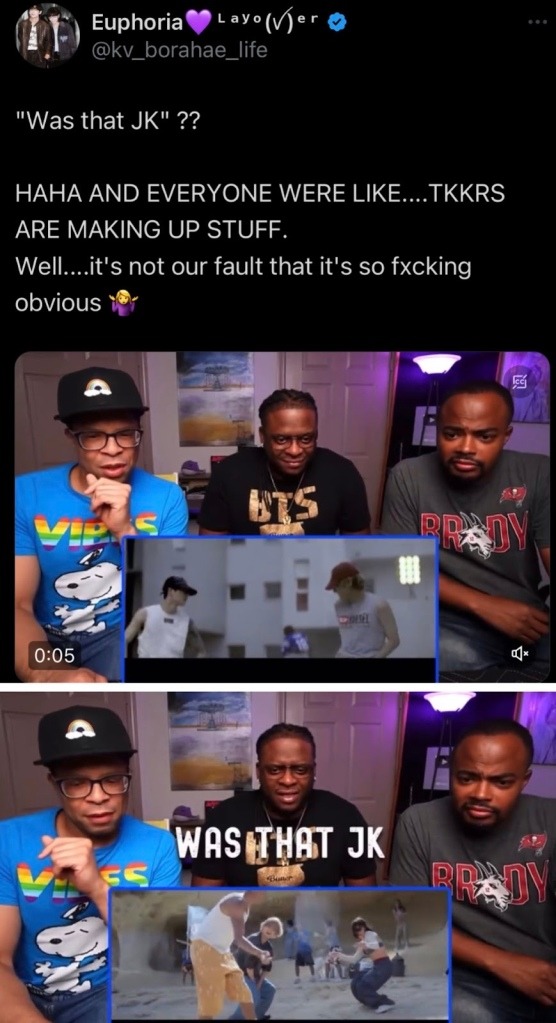
YouTube reaction 2:
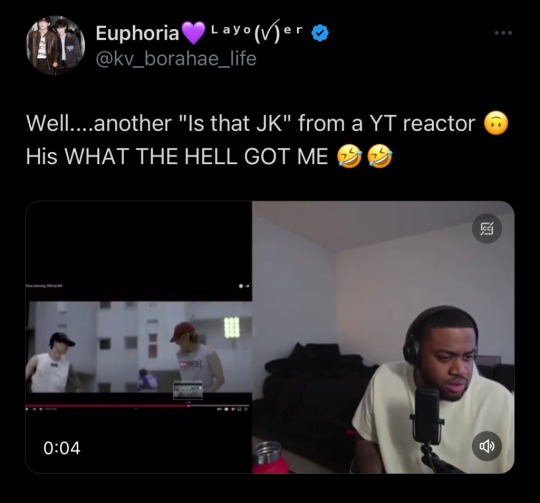
Asking if Jk (1):
https://x.com/kv_borahae_life/status/1700482865564434669?s=46&t=StSwHjW0_Domk_lHUFMaCg
https://x.com/philtaetos/status/1700464525210689770?s=46&t=StSwHjW0_Domk_lHUFMaCg
Asking if Jk (2):
https://x.com/kv_borahae_life/status/1700510529805238413?s=46&t=StSwHjW0_Domk_lHUFMaCg
Someone on Tik Tok, who isn’t a shipper, also asked.

https://x.com/koosyoyo/status/1700621810059153767?s=46&t=StSwHjW0_Domk_lHUFMaCg
As quite a few noticed, there are a lot of queer coded vibes in this MV + “where the wild things are references.” First, the cast is from the same agency queer artist Sam Smith has utilized. Once again, Tae is supporting people of the community!
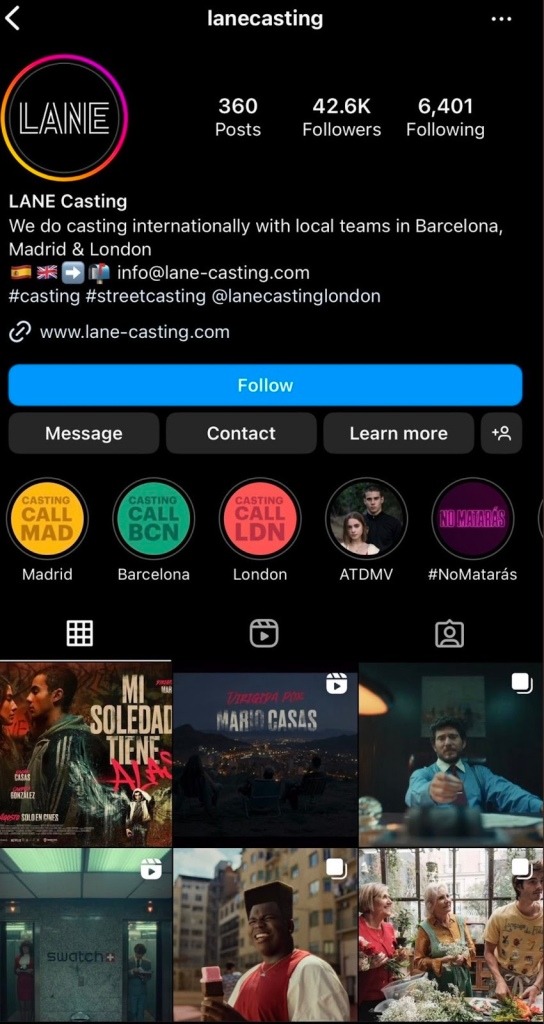
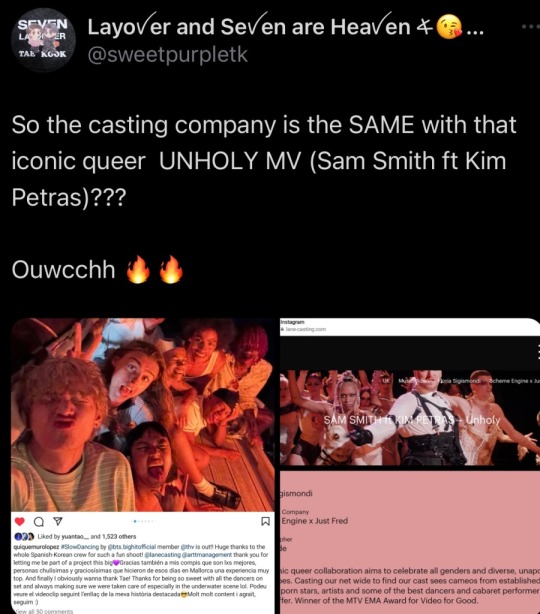
https://x.com/sweetpurpletk/status/1700354798653255988?s=46&t=StSwHjW0_Domk_lHUFMaCg
And here are some of the amazing and beautiful people cast: Sergio Pérez (Sergio Afro), Bryan Montero, Quique Muro Lopéz and Febo (I don’t have the name to the fifth person) -



CT below for four of the the five: https://x.com/marifenes/status/1700124760129077270?s=46&t=StSwHjW0_Domk_lHUFMaCg
In the MV, we discover Tae is a mad scientist that has created an alternate reality.

He creates an alternate reality on the beach, which represents a utopia for him, where he can be free and happy to express himself (which can be gleaned from the start, when his photo with friends only shows himself).
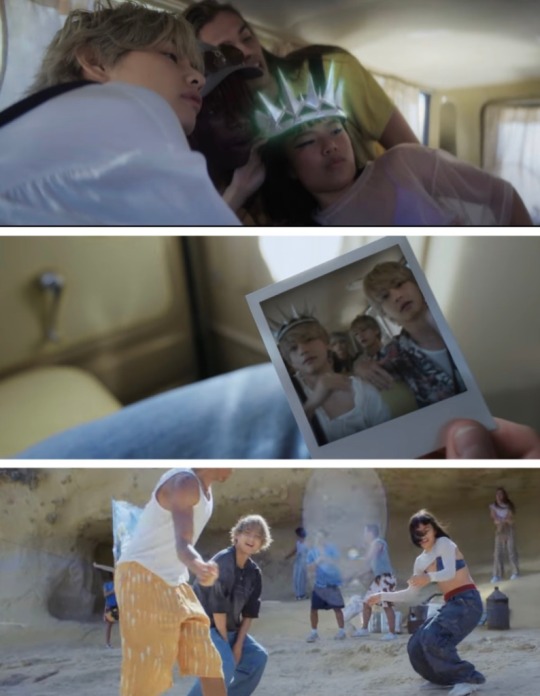
But what’s interesting is the Jk and Yeontan (Tannie) look alike are not at the beach utopia he’s created. They’re part of his actual reality, both at the same building. They’re the only ones that are part of his real life, while his beach friends are creations of his imagination. The Jk look alike is part of his past, only appearing when Tae created the dances in his home. Tae wanted to recreate those past memories of dancing with him in his dream utopia. I really think he’s conveying a hope, yearning and goal for freedom. And I really think it’ll happen.

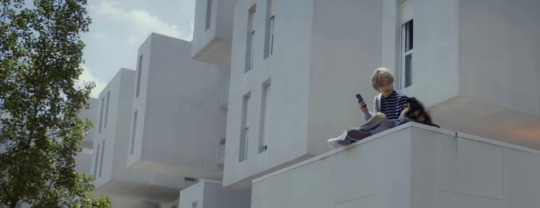
Theories can be found at these links:
https://x.com/kv_borahae_life/status/1700367522955178164?s=46&t=StSwHjW0_Domk_lHUFMaCg
https://x.com/jjkthvsoloera/status/1700067528079266152?s=46&t=StSwHjW0_Domk_lHUFMaCg
https://x.com/koosyoyo/status/1700192767077658906?s=46&t=StSwHjW0_Domk_lHUFMaCg
https://x.com/00requiem/status/1700004910429839432?s=46&t=StSwHjW0_Domk_lHUFMaCg
You can read more on the “where the wild things are” linkage here:

https://x.com/shallwedancetk/status/1700103730186571947?s=46&t=StSwHjW0_Domk_lHUFMaCg
Raw (time stamp 2:20) https://youtu.be/eI0iTRS0Ha8?si=brrC_nvYGMtYfFmE
Also, I may as well archive this while I’m at it! In his “Rainy Days” MV, the hoodie in Tae’s bed is a men’s hoodie😀
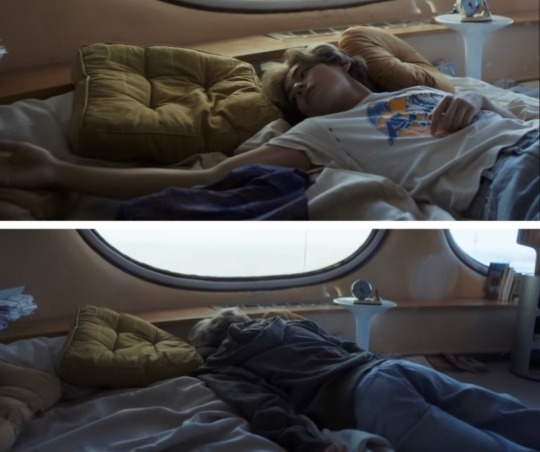
Raw - https://youtu.be/yTsINmrAK4I?si=8CJC3OZ2GtMF1i9o
55 notes
·
View notes
Text
Old-Time Tradition: Folk Musicals
Grease (1978)
This film follows Danny (John Travolta) and Sandy (Olivia Newton-John), two teenagers from different worlds. After a summer fling, they thought they would never see each other ever again, but unexpectedly reunite in the same school. Sandy, initially a wholesome stereotypical "IT girl”, tries to fit in with Danny's greaser crew, the T-Birds, and their sassy counterparts, the Pink Ladies.

Identity in Grease: A Song and Dance
The musical numbers in Grease are very energetic and catchy, but they also play a big role in exploring how the characters navigate their identities. Many songs like "Look at Me, I'm Sandra Dee"—(I don’t drink, or swear. I don’t wrap my hair. I get ill from one cigarette. Keep your filthy paws from my silky dress)—and "Beauty School Dropout" showcase characters trying on different identities. Sandy tries to be the ideal 50s girl, while Rizzo rejects society's expectations. They all use songs to experiment and find their place in the T-Birds/Pink Ladies dynamic. On the other hand, songs like "Greased Lightnin'" and "We Go Together" solidify that bond that we can perceive between the T-Birds and Pink Ladies. Moreover, love, frustration, and teenage angst all find voice through the music. "Hopelessly Devoted to You", probably the most emotional song on the movie’s tracklist, lays bare Sandy's feelings, portraying her as the basic, easily enamored girl.
youtube
The film reinforces stereotypical gendered behaviors. For example, in “Summer Nights”, the girls' lyrics ("Tell me more, was it love at first sight?") center around romance and emotions, suggesting a more emotional and sensitive view of love. Whereas the boys' lyrics ("Tell me more, did she put up a fight?") imply a focus on sexual conquest, portraying a more aggressive and sexualized view of romantic relationships. The song reinforces the idea that men and women approach love differently based on these stereotypes and it could be argued that it promotes non-consensual intimacy.
youtube
The characters in Grease don't just burst into song for no reason, their world revolves around music. The energy and choreography allow characters to process their emotions in a big way. In fact, the film doesn't shy away from showing the characters enjoying music and dance for pure fun.
Yet, the world of Grease isn't exactly diverse
It is noticeable that the film avoids touching on any serious social issues of the 1950s, like racial tensions or economic disparity. This creates a sanitized version of the past and ignores the complexities of real life. Moreover, it pushes away the idea of 'Black Joy' as being something achievable even more. The music itself doesn't delve into racial themes, and there is quite literally, only one visible Black character in the movie—Frederick "Dennis" Greene as part of the singing group Johnny Casino and the Gamblers, reinforcing the idea that "Black musicality—the all-blacks-got-rhythm syndrome—of White cinema." (Dyer 98.)
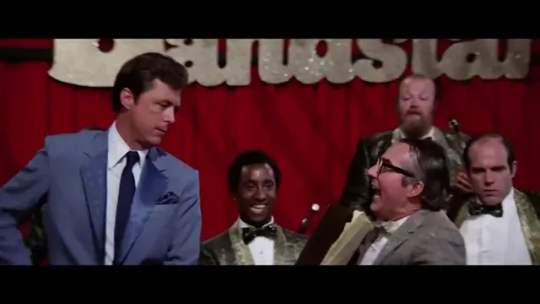
The Ordinary → Utopia
Several elements align with the classic trope of white musicals seeking to transform the ordinary into a utopia; everyone is happy and music comes out of nowhere. Sandy's journey from a demure, "good girl" to a leather-clad greaser epitomizes this trope. Her initial wholesomeness represents the ordinary, while her adoption of the greaser look signifies a transformation into something cooler and more exciting. This aligns with the utopian ideal of escapism. On the other hand, Rydell High itself is portrayed as a somewhat utopian space. Sure, there are cliques and social pressures, but overall, it's a place where teenagers can have carefree fun. Finally, the film's resolution reinforces the utopian ideal. Danny and Sandy reconcile, the T-Birds and Pink Ladies maintain their cool-kid status, and everyone seems to get their happily-ever-after. This all-pink ending avoids the complexities of real life, where there are serious conflicts and consequences for teenage rebellion, and presents a more utopian world.
Circular time?
Black musicals often depict a cyclical view of time, where characters return to their "real life." As Dyer states, "white joy is in a
space freed from labor; Black fun dips into the thing to have a good time while working." We can clearly notice this in the film. The ending suggests the T-Birds and Pink Ladies will stay on this high school path, but there's no real sense of daily life hardship.
youtube
20 notes
·
View notes